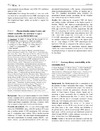Identificador persistente para citar o vincular este elemento:
https://accedacris.ulpgc.es/jspui/handle/10553/41929
| Title: | Plasma trimethylamine-N-oxide and related metabolites are associated to type 2 diabetes risk in the PREDIMED trial (P 146-T) | Authors: | Papandreou, C. Bullo, M. Zheng, Y. Ruíz-Canela, M. Yu, E. Guasch-Ferre, M. Toledo, E. Clish, C. Corella, D. Estruch, R. Ros, E. Fito, M. Aros, F. Fiol, M. Lapetra, J. Serra-Majem, Ll Gómez-Gracía, E. Liang, L. Fragkiadakis, G. Razquin, C. Hu, F. Salas-Salvado, J. |
UNESCO Clasification: | 3206 Ciencias de la nutrición | Issue Date: | 2018 | Journal: | European journal of clinical investigation (Print) | Conference: | 52nd Annual Scientific Meeting of the European Society for Clinical Investigation “Precision medicine for healthy ageing”, Barcelona, Spain, 30th May – 1st June 2018 | Abstract: | Background: The role of trimethylamine-N-oxide (TMAO) in type 2 diabetes (T2D) is currently partially understood and controversial. We aimed to investigate associations between TMAO and related metabolites with type 2 diabetes (T2D) risk in subjects at high risk of cardiovascular disease. Material and methods: This is a case-cohort design study within the PREDIMED study, with 251 incident T2D cases and a random sample of 694 participants (641 non-cases and 53 overlapping cases) without T2D at baseline (median follow-up: 3·8 years). We used liquid chromatography-tandem mass spectrometry to measure plasma TMAO, L-carnitine, betaine, lyso-phosphatidylcholine (LPC) and lyso-phosphatidylethanolamine (LPE) species, phosphocholine, alpha-glycerophosphocholine, choline, at baseline and 1-year. We examined associations using weighted Cox proportional hazard models; accounting for the weighted case-cohort design by the Barlow method. Results: After adjusting for recognized T2D risk factors and multiple testing, individuals in the highest quartile of baseline TMAO and alpha-glycerophosphocholine had lower risk of T2D; hazard ratio (HR) 0·52 (95% CI 0·29, 0·89), and 0·46 (95% CI 0·24, 0·89), respectively. The HR (95% CI) comparing the extreme quartiles of betaine was 0·41 (0·23, 0·74). Similar trends were observed for C16:0 LPC, C18:1 LPC, C18:0 LPC, C20:4 LPC, C22:6 LPC, C18:1 LPC plasmalogen and C16:0 LPE. After correcting for multiple comparisons, participants in the highest quartile of 1-year changes in C18:1 LPC plasmalogen levels had lower T2D risk as compared to the reference quartile. Conclusions: Whether the associations between plasma TMAO and certain metabolites levels with T2D risk reflect its pathophysiology or represent an epiphenomenon need to be elucidated. | URI: | https://accedacris.ulpgc.es/handle/10553/41929 | ISSN: | 0014-2972 | DOI: | 10.1111/eci.12926 | Source: | European Journal of Clinical Investigation [ISSN 0014-2972], v. 48 (S1), p. 176-176 |
| Appears in Collections: | Póster de congreso |
Page view(s)
99
checked on May 18, 2024
Download(s)
93
checked on May 18, 2024
Google ScholarTM
Check
Altmetric
Share
Export metadata
Items in accedaCRIS are protected by copyright, with all rights reserved, unless otherwise indicated.
